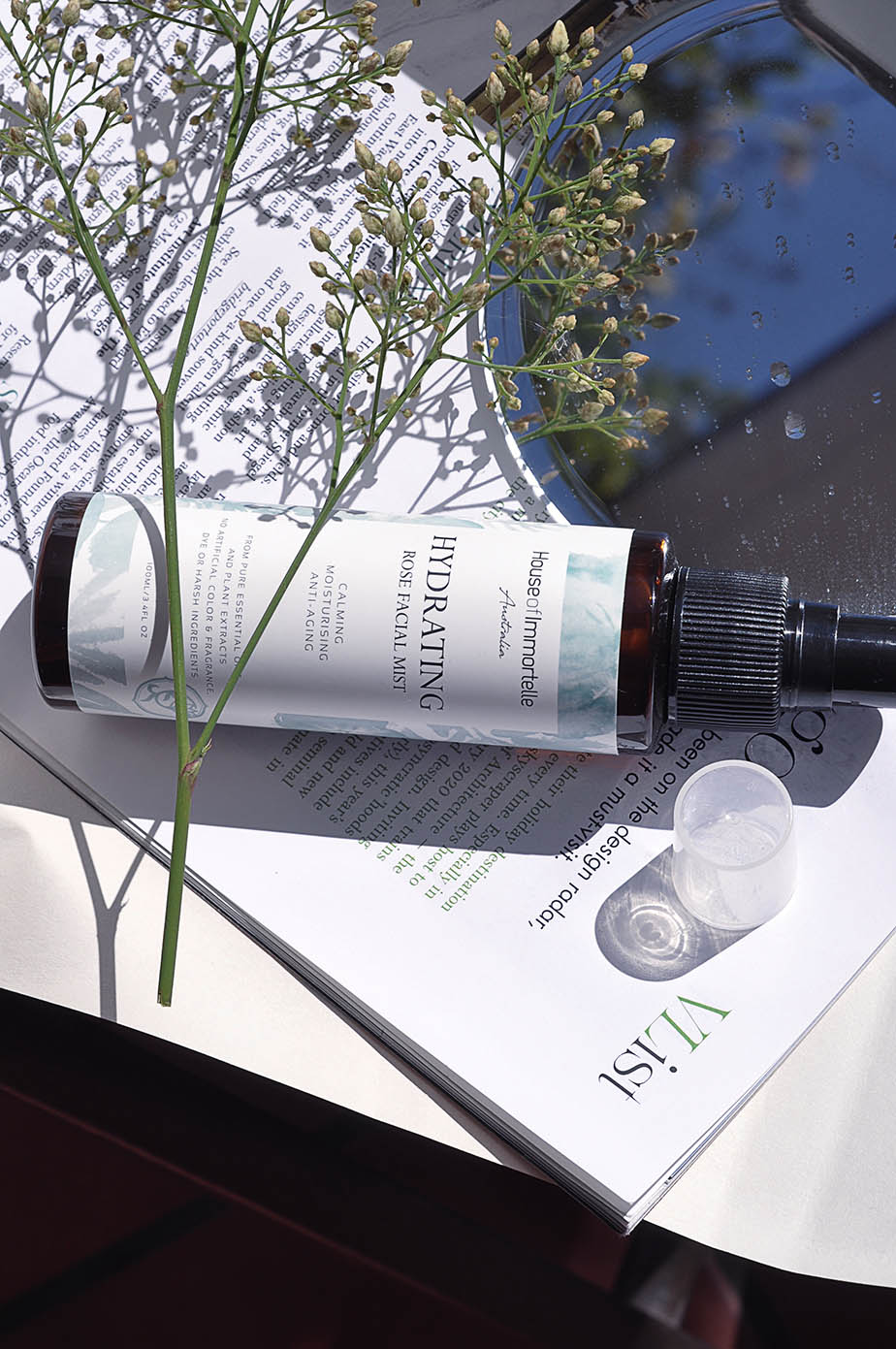
When it comes to skincare, there is always something new to learn and a new ingredient to explore. One such ingredient that has gained popularity in recent years is hydrosols. Hydrosols have now become a staple in many waterless skincare brands and a selling point for waterless skincare products, but what are their unique properties and benefits that have everyone checking ingredient lists for them?
In this article, we will explore the world of hydrosols, understanding what they are, how they are made, which types are commonly used in skincare and what benefits they offer.
What are Hydrosols?
Hydrosols, also known as “hydro-distillates,” are the by-product of the production of essential oils. Specifically, they are the by-product of the steam distillation process used to produce essential oils from plant material.
This steam distillation process begins when plant material such as flowers, leaves, or herbs are placed in a distillation apparatus. The apparatus uses steam to pass through the plant material, causing the essential oils to evaporate. The steam carrying these essential oils is condensed and then collected. The collected liquid contains both essential oil and hydrosol, with the essential oil floating to the top of the collected liquid and the hydrosol remaining at the bottom.
The two are separated, resulting in an essential oil and hydrosol of the plant from which it is made.
What makes Hydrosols different from essential oils?
The difference between essential oils and hydrosols is that essential oils are highly concentrated and often need to be diluted before being used directly on the skin. Essential oils can easily cause irritation and damage when used directly on the skin. On the other hand, hydrosols can be applied directly to the skin without dilution and have a more subtle, delicate scent of the plant they are made from. They also contain a wide range of water-soluble compounds from the plant they are made from. These water-soluble compounds include aromatic molecules, phytonutrients, organic acids, vitamins, and minerals, making hydrosols an easy addition to boost your skin routine. This is why more brands, such as House of Immortelle, often use hydrosols in their products.
What are the benefits of hydrosols?
The most significant benefit of hydrosols is their hydrating and moisturising properties. Because hydrosols contain water-soluble components that are easily absorbed by the skin, they help to replenish the skin’s moisture levels, leaving it feeling soft, plump, and supple.
The second major benefit of hydrosols is their soothing and calming properties. These properties are ideal for sensitive skin as they can help reduce redness, inflammation, and discomfort. This can be useful for those with conditions such as eczema or rosacea. And because hydrosols are gentle by nature, they can be used without fear of causing further irritation.
Hydrosols also often contain the antioxidant properties of the plant they are made from. Antioxidants help protect the skin from environmental damage and premature ageing, and can neutralise harmful radicals, further reducing the appearance of fine lines, wrinkles, and age spots. In addition, hydrosols support the skin’s natural barrier, helping it to defend itself against external pollutants, irritants, and other aggressors.
Finally, hydrosols often have therapeutic properties due to the flavonoids, terpenes and phenols contained in their key compounds, which are derived from the plant from which they are made. This makes hydrosols a good and natural mood enhancer that can be sprinkled throughout the day.
In short, hydrosols have a wide range of benefits that can be summarised as moisturising, gentle, skin-enhancing, and therapeutic.
What are the different types of hydrosols?
Because hydrosols are made from plant material with their own specific benefits, their range of benefits also vary depending on which plant material they were derived from.
Here are some hydrosols that are commonly used due to their specific benefits.
1. Rose Hydrosol
Derived from rose petals, rose hydrosols are often used for their soothing and hydrating properties. They help to balance the skin’s natural pH level and are suitable for most skin types, including sensitive and mature skin. As well as moisturising, rose hydrosols help to reduce redness and inflammation while promoting a revitalised complexion. They also contain a mild rose scent known for its calming effect on the mind and emotions. One way to incorporate rose hydrosols into your skincare is by opting for a mist such as this House of Immortelle Hydrating Rose Facial Mist.
2. Chamomile Hydrosol
Chamomile hydrosols are known for their gentle and soothing properties, very similar to those of the chamomile flowers from which they are derived from. Because of these soothing properties, chamomile hydrosols are known to be particularly beneficial for sensitive and inflamed skin, as it can help to soothe and comfort irritated skin. It also reduces redness, soothes itchiness, and contains antioxidants that support skin health.
3. Lavender Hydrosol
Lavender hydrosol is known for its soothing and balancing properties. It is ideal for acne-prone and sensitive skin as it can soothe irritation and promote a clearer complexion. Lavender hydrosols also have antiseptic properties that help heal and prevent breakouts.
Those are some of the most commonly used hydrosols in skincare and what makes them so beneficial.
Hydrosols have become a valuable addition to the world of waterless skincare. Derived from steam distillation, these floral waters offer numerous benefits, including hydration, soothing and antioxidant properties. They replace harsh toners and provide a natural alternative that nourishes the skin without causing irritation.